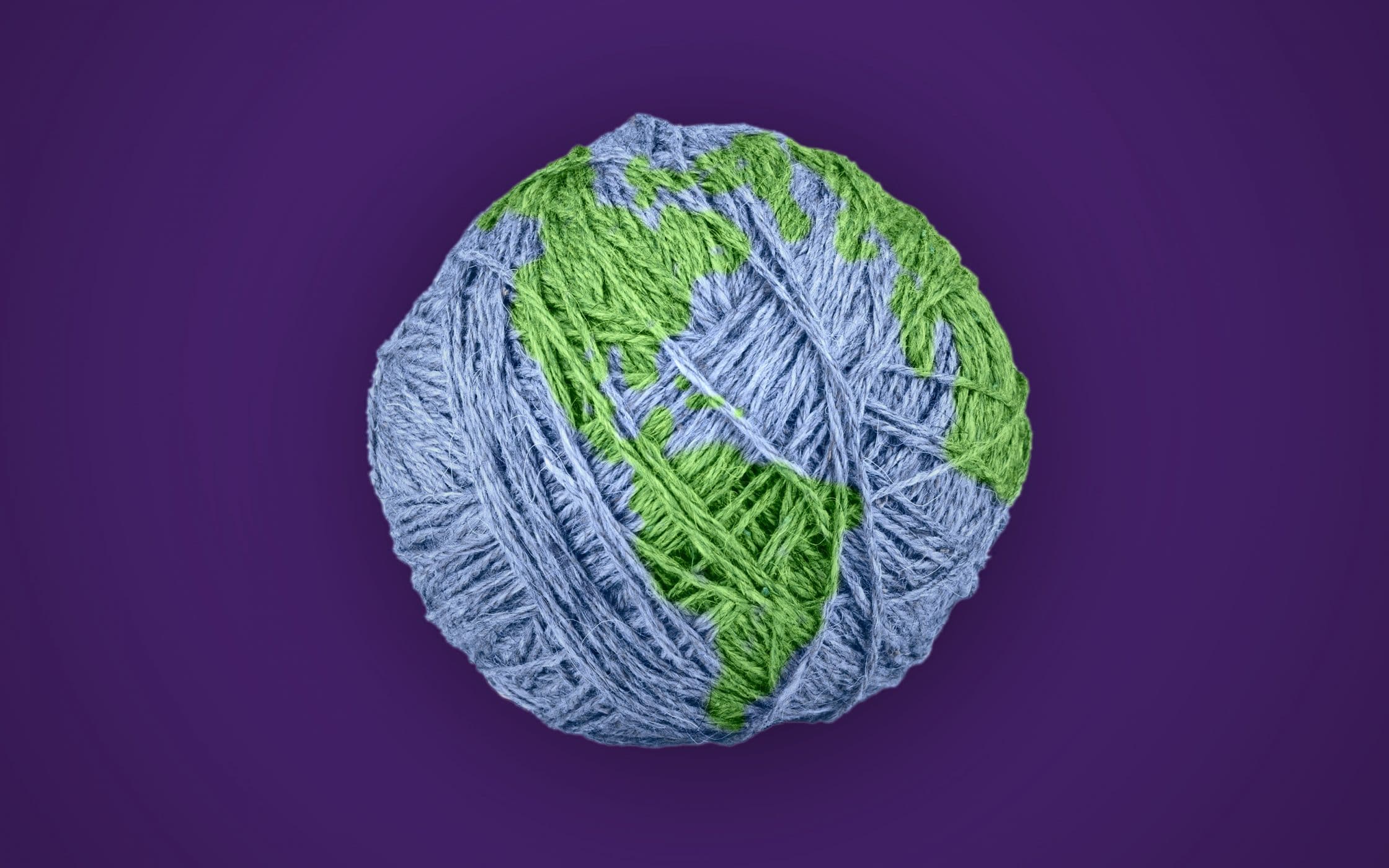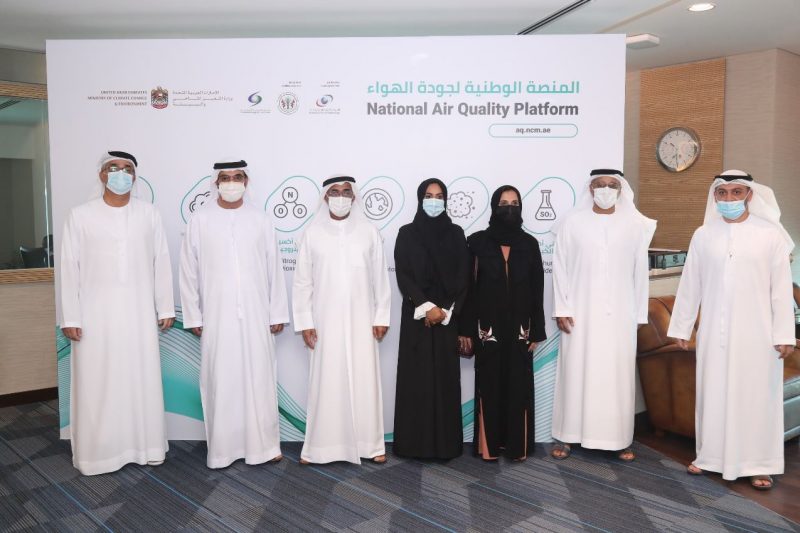Sustainable Fashion
Opinion Piece

February 15, 2020, 11:32 am
The first thing that comes to the mind when we hear Sustainable Fashion is that it comes
as a joke to the mind of whoever is part of the industry considering what those terms mean which are two contradictory words together that makes no sense ; can never be the same. If you see very deeply, sustainability is nothing but a long-term strategy to be acceptable or permissible for the current needs of the population without affecting the future generation. This also means the need to be ethical ; make the world a better place to live for all living beings. On the other hand, fashion is like one way of following the latest or popular trend, fad, craze, style at the present moment. It may be in the form of clothing, hair, decoration (Interior design). This craze, trend, fad never stays for long which are just meant to be short term ; keep changing with time. Now let’s just focus on clothing. Most of these things are followed by the younger generation ; they are the major players in the fashion industry.
The rapid growth of globalization & technology has even speeded up the way this
generation keeps itself updated on the fashion perspective. Clothing plays a bigger role in this
generation’s perception of fashion as it’s a big deal-breaker for the majority of the prospects who look up to dating someone or impress someone to like them at the initial stages of the
relationship. Well, this sounds that it can be only done by wearing high branded clothes or that looks flashy maybe. Most of these clothes could be made from unethical ways like using animal skin, polyester materials, petroleum-based products and other non-renewable resources that won’t be bio-degradable. These are all harmful, dangerous materials ; play a diverse role in affecting the balance of the environment we live in. But the worst part is, these kinds of clothes are so fashionable ; a custom made, it’ll surely only look good ; fit on someone who is young. As trends keep varying from time to time, people buy more ; more clothes to feel recognized by following the trend ; latest style. This further increases the wardrobe variety of one ; overloads it causing people to throw even the newest one they brought. So these clothes have a very short usage time (value) by the customers ; they will be thrown or dumped by them. Hence, these will be degraded later ; it drastically affects the world ; the people. There are many reasons why this happens. Clothes made on this materials wear out sooner ; as the style or trend changes they land up in waste which is very hard to get rid of.
Another is the cost-cutting method of producers to design ; produce clothes at the least cost ;
cheap labor without caring about the environment ; the people in it. These all have made
fashion as one of the top 2 polluting industries in the world after oil ; petroleum industry.
In the fashion industry, all this pollution ; other problems begin right from the start of
conversion of raw materials into clothes/garments. To produce a large amount of cotton, silk,
wool ; other clothing materials it takes a large amount of water for its production, hence it
causes the water resources to deplete more quickly than we can imagine, thus leading to water scarcity ; shortage for other human purposes.
The conversion or work in progress stage is another big influence in polluting the
environment with wastes. It’s the stage where the whole design is being implemented in the form of coloring ; stitching or knitting, weaving. Around 10,000 chemicals are being used for this process. Most of the leftovers of these chemicals after production gets transferred to rivers ; ponds nearby thus affecting the locality ; the life of living beings around it. This also leads to water pollution ; affect the environment.
When the trend goes out of style or outdated, then these clothes get out of the shelves ;
just end up in landfills which are burnt further to be degraded. Since the carbon content is high on these materials, it ends up forming carbon dioxide (CO 2 ) ; carbon monoxide (CO) which therefore pollute the atmosphere ; these gases are the main pillars of causing bigger problems like global warming ; other environmental problems that lead to climate change. Exposure to these chemicals also affects the workers who are involved in it ; therefore affects their health in the long-term. Overall, this has made fashion industry creators of most toxic ; dangerous substances which pollute the environment ; affect the life cycle of every people.
The above all problems ; recent incidents/disasters of various brands have made the fashion industry to look upon the concept of sustainability. The fashion industry is not alien to sustainability in true nature. Over the years, the top brands have focused on giving value ;
respect to the environment and people working in it. But there are so many challenges barriers which are kind of making the intermediaries in the supply chain of the industry to think twice before moving into eco- friendly clothing ; accessories production.
If you overlook things from the business point of view, mass production of clothes ; accessories are done massively all around the globe to reduce all huge costs ; make it attractive so that it gives some high aesthetic value to the clothing. The neck-throat competition between top fashions brands ; effect of technology, globalization has made the supply chain of fashion industry even more complex ; sophisticated than it already is. So everyone wants to compete with one another ; use the customers (target markets) temptation ; urge to buy clothes at lower rates ; look attractive at a most feasible rate.
In this fast-paced world, where every person in this generation wants the best in terms of
clothing ; want to be exclusive in the way they carry themselves. No one as a consumer thinks from nature’s perspective ; are focused on only themselves. This had led to more greed for the customers who keep changing their wardrobes every season. Thus the fashion industry just not only focuses on the needs of main consumers but only multiplies these needs into a form of an addiction which is a bad sign for environment ; nature on large scale. This addiction is used to the full potential by the majority of the top fashion brands to gain market share ; be more competitive.
Many top fashion firms are concentrating on the need for sustainability to stay in
competition ; it is still growing since it requires a lot of investment ; customization. But most of these brands just use it as an advertising tool to gain profits ; revenues in the form of a tagline which has very less effect ; nothing did really ethical in practice. There can be a solution to all this ; but it requires a lot of self-realization by the consumers, manufacturers, retailers, businessman ; the government of all countries. Let’s see how this can be done by each segment.
Statistically, it’s been shown by surveys ; data that around sixty percent of the wastes of
fashion ; textile is produced by the major rich population. Looking at it geographically, they
only make one-tenth of the population. These top brands exclusively concentrate on these
populations as their target market for revenues. Therefore, the big R’s (rich majority consumers) should concentrate on practicing the simple principle of three R’s-Reduce, Recycle, and Reuse which lays the basic foundation for sustainability.
Consumers have to become smart ; should reduce the principle of buying clothes very
often ; change their purchase behavior from buying frequently to buy less ; not spend lavishly on just foolish things ; focus on the quality rather than quantity. Many of these rich populations think that cost is related to quality which is the biggest misconception a consumer can have. Quality is totally dependent on raw materials quality ; the workers/labors proficiency has with processing ; methods for conversion. They should even reduce the purchasing of carbon concentrated clothing ; buy more clothes that are produced by natural fibers or a new form of innovative eco-friendly fiber that is new in the market.
Well, after using it many times or reaching its full utility rather than disposing of it in the landfill it can be recycled ; be reproduced for other daily uses even for the simplest of things.
This has to be learned from lower ; middle-class people who practice this in the best way
possible. This way different cultures can learn from one another ; make diversity, social
responsibility as fashion. There are even other alternatives if the clothes are torn or
unattractive, we can use creative mending techniques to reuse it ; tinker it in the most optimum manner without using any unethical methods. Just like how each ; every vote makes a difference in choosing the government, even each ; every reuse done by mending will also
inspire ; spread awareness on the process of reusing. If this is implemented ; practiced, it can
make a world of difference. As there is an older saying, its little things that matter the most.
The C-suites or the decision-makers of top fashion brands (marketers) should bring
sustainability as their unique value proposition rather than focusing on being flashy ; just meet the needs of consumers. They should keep in mind the world as a whole ; the workers involved in manufacturing the materials so that they can set up some ethical standard ; rules in the producing, processing of clothes ; penalize those who violate it.
The fashion brands should focus primarily on equating value with sustainability. Apart
from the retailers, merchandisers ; other intermediaries, more concentration should be given to those laborers, workers, designers who toil hard to produce the clothes at least cost ; compromise with quality to meet demands based on quantity. A great amount of consideration should be given to them ; standard ethical working conditions should be set up for them to work comfortably so they don’t get harmed by the work materials. The main fashion clothes manufacturing brands should try reducing ; eliminate the use of toxic chemicals ; dyes for
producing clothes. The industry should follow producing clothes by just using materials that can be processed by natural means, not by the usage of synthetic fasteners ; additives to make it more appealing.
Most of the practices mentioned have been tried here ; then by only a few of the special
brands who can afford to risk it ; try to make a change for making the world a better place for
all through the fashion medium. Many top firms like Patagonia, Eileen Fisher, and Reformation have realized this ; started promoting, introducing eco-friendly clothes in their collection. It has become a hot topic for quite a while now. But this will not work only if high-class brands implement this. It should be an industry-wide movement where all top fashion firms ; brands that cater to the majority of the population like the lower ; middle class should become more ethical ; responsible for catering to the needs of people long term as clothing is one of the most important basic need in their life. It anyways signifies that the industry is trying to make a change ; make things better for the future. New entrants into the industry should focus on being eco-friendly ; producing those elements by inculcating this into their fashion business model. This can be their USP which differentiates them from the competition, but it’ll be hard initially.
Amongst the recent years, the recycling practice is followed by consumers in many
countries where the waste clothes are distributed to the unfortunates in the form of charity. It was learned that demand for those unfortunates was lesser by a huge percentage than the supply of waste clothes, thus resulting in the huge quantity of them piling up in a landfill for their end in the form of partially degraded matter polluting the atmosphere. This shows that how charities are overcrowded with loads of crappy, obsolete fashion items thus signifying how fast-moving are these items that have traveled in a flash from being a hero (trend) to zero (nothing). Some top national fashion retailers have started the awareness by encouraging customers to return the waste ; repair clothes by providing them incentives for the number of clothes they have provided based on scale rate. Even they have tried to increase the use of recycled materials for production ; processing.
Still, all this effort hasn’t been enough ; the sustainability is still growing only slowly in the industry which is as dead rubber influencing the big gears of nature in a negative manner.
This can be improved better by the formation of a board or council of a few members amongst the top fashion brands (major market shareholders) with the help of the government in local ; national level to set up a few ethical standards ; protocols like
· for working conditions to be safe for workers
· to specify the minimum quality grade of raw materials required for stitching,
weaving, knitting ; other processes for the different type of materials
· to ban using high carbon concentrated fiber compounds for clothing
· to spread awareness ; begin movements on mending, slow clothing ; purchase
behavior at the international, national ; local level
- to ban the use of toxic chemicals for coloring
· for the top fashion retailers to provide the weavers with a high stake or provide
some shares to focus on eco-friendly clothing ; to provide innovative touch in the weaving
methods
· educate the consumers on how fashion can also be green ; support the environment
in large-scale
· for collaboration of developing nations ; developed nations (businesses)
· for making it mandatory for all fashion brands ; business to get an “Ethical
Clothing Accreditation” whether it is national, international or local
· providing the clothes, accessories with ethical code tags/labels similar to barcodes
by introducing the “Ethical Quality Qualification” label (EQQ) so consumers purchase only
what is good for them ; the environment as a whole
· to spread awareness on using recycling materials for production by all these
fashion business firms
· to prize all micro shedding fiber clothes lower than the ones which are of natural
fibers ; help restore faith in fashion with respect to humanity
· Lastly, establishing a small NGO kind of customer service department by major
players within their system for collecting waste clothes, accessories ; redistribute it for
reducing the wastage i.e. a wide-scale movement encouraging customers to come ; return
their clothes after utility. This can be done by calling consumers after a certain time
period using the consumer purchase database.
All these methods, processes, standards, procedures regarding ethics can only be
practiced ; implemented in the fashion industry if there is a collaborative strategy between
government officials, businessmen, manufacturers, distributors, retailers ; even the consumer.
This is only possible if all the major players in the supply chain of the fashion industry, right
from the producers of raw materials, worker/labors involved in the conversion of product
(stitchers, weavers, sewers, tailors, processors, the top management of businesses, distributors, retailers have a little thought of heart ; soul ; realize that they are also consumers like the rest of them, it can make the fashion industry more sustainable. If the consumers think like that in reverse ; vice versa, then it leads to the greater good of the environment ; restores the balance of nature by reducing carbon footprints in the world as they become more cautious of their choices; have trust on the suppliers/producers/retailers brand.
The fashion weavers, designers, manufacturers, labors of these clothes play a vital role
in fashion industry ; they have to be the most considerate, thoughtful, little transparent ; ethical by not making any mistakes or wrong ; illegal methods by practice ; stop the ones doing so.
It’s their responsibility to put the environment above the business. The sustainability fate of this environment ; nature is decided only by us people living in it who consume the goods i.e.
wearing clothes. The destiny of this living ; future populations is decided by the government of the country that they are living ; its laws, protocols, regulations, overall, it’s the constitution. The future of these governments ; its operations are determined by top businesses, businessmen, markets ; brands. All these brands, businesses are all outcomes of workers, laborers, weavers, etc. in the fashion industry supply chain. One wrong thing they do to increase revenue ; the business has an exponential impact on the environment in a negative manner. This makes these fashion industry players social justice workers.
You might be wondering if a worker in the fashion business implements all these methods;
practices it in business it’ll bring down the business of firm down due to its less fanciness;
attraction further reducing the salary of the worker. Well, here’s the dilemma where consumer plays a major role by showing he/she wants only good; valuable products for long-term with respect to quality. This can become only significant by the purchasing decisions, frequency, and choices of the consumer. If it is related to quality; naturally produced clothes then every intermediary player of the fashion supply chain like weavers, workers can confidently; boldly convince their top officials (C-suites); the DMU’s (decision-making units)- marketers, that consumers only want eco-friendly products which are sustainable; make the world a better place. Hence, they can strongly convey that this is the demand; then all the businesses; businessmen should provide supply to only those demands. This way the sales of the fashion industry will increase in a sustainable manner thus multiplying the profits; incomes.
Overall, everyone has a win-win by making the world a better place to live by our own
choices of clothing; fashion. As said before, sustainability is all about making a change to the
environment for a greater good. Therefore, fashion stitched to culture can be used as a medium to weave the perspectives of consumers; manufacturers (producers); make them realize deeply that they are the same person, so they can motivate; respect one another to make sustainability a “pattern” in fashion; alter fashion’s traditional meaning in true sense.










